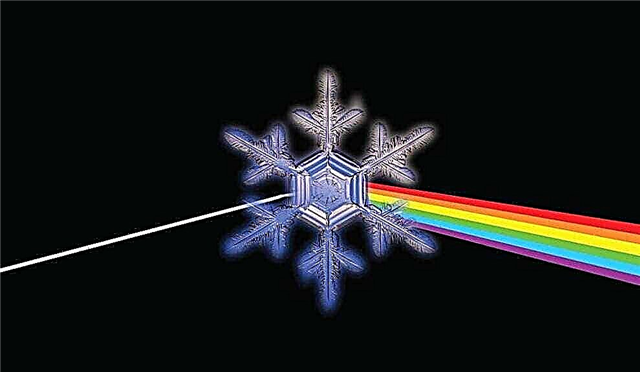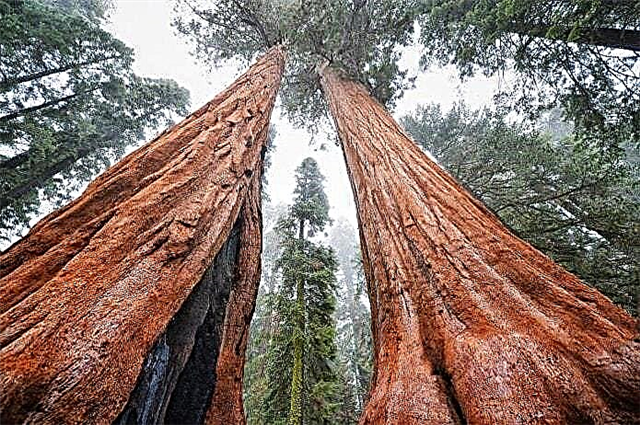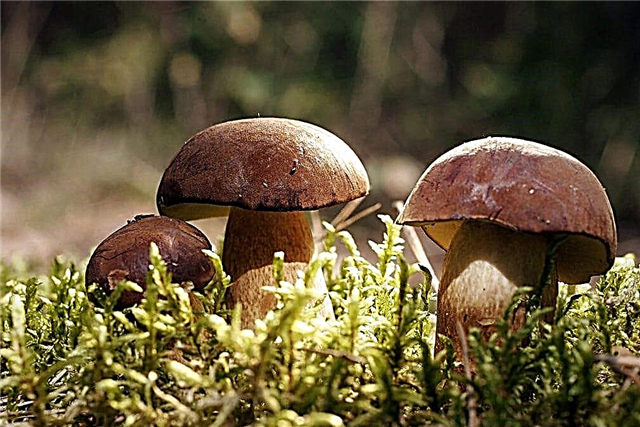
Children are always looking forward to the winter. Sculpting a snowman, sledding and jumping into snowdrifts is interesting and pleasant! After active games in the fresh air, they often find inspiration, and the questions begin: “Why is the sun yellow and the snow white?” Few explain the reasons for these phenomena to the little ones. We will answer at least one of the above questions. So why is snow white?
Short excursion into physics

Earth is surrounded by electromagnetic waves. They are everywhere, but mostly not visible to living things. What perceives vision is considered color - electromagnetic radiation, a wave that gives a color sensation. The main source of electromagnetic waves is the sun. Its rays include all the primary colors:
- red;
- yellow;
- blue;
- blue;
- green;
- Orange;
- Violet.
If all the colors merge together, a white tint forms, and the sun's rays are just white.
Every object on Earth transmits (reflects, absorbs) sunlight. There are also those that fully reflect it, such as ice. Every single snowflake is the same ice.
Interesting facts about snow:
- Half of the inhabitants of the globe have never seen real snow, only in the pictures.
- In 1949, snow fell on the Sahara for the first and last time. Snowfall lasted more than half an hour.
Snow and color
Snowflakes lie on the ground randomly, and as a result, the snowball does not let through completely electromagnetic waves (sunlight).Therefore, if a dent is made in a snowdrift during sunny weather, the snow appears green-yellow. When it is cloudy, it looks blue. If the sky is a bright red sunset - pink. All the colors of the rainbow are displayed on the surface of the snowdrift when it is clear and sunny on the street.
In latitudes that are closer to the poles of the Earth, snow appears saturated red. Scientists often note a similar phenomenon in Artik. In the USA, namely the state of California, in 1955, residents observed green snowfall. In 1969, black snow fell on Switzerland. Yellow snow fell in Russia in 2015, about which they wrote for a long time wrote in the media. The air masses brought with them African sand dust, which painted atmospheric precipitation in an atypical color for them.
Interesting facts about snow:
- There are no two identical snowflakes, each with its own separate pattern. Physicists claim that there are more such patterns than atoms on Earth.
- World Snow Day is celebrated annually on January 19.
The fact that the snow is of different colors, made a note in the diary great Charles Darwin. It is known that once the writer went on a trip, and noticed that the horses left red traces in the snowdrifts. There was a bright sunset, so the snow seemed not white, but pink.
The concept of color is generally subjective. One sees the grass green, the other - light green, the third - turquoise. These phenomena are not yet fully understood.
So, the answer to the main question: “Why is snow white?” He mirrors the sun's rays, which, as already mentioned, are white. But it is worth interfering with some weather phenomena - clouds, bright sunset, and these precipitation will no longer seem such a shade.











